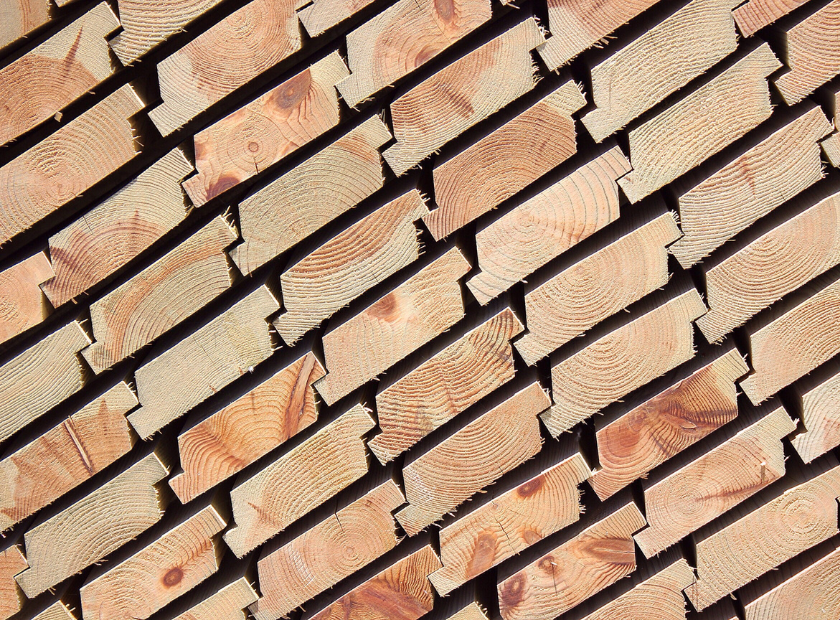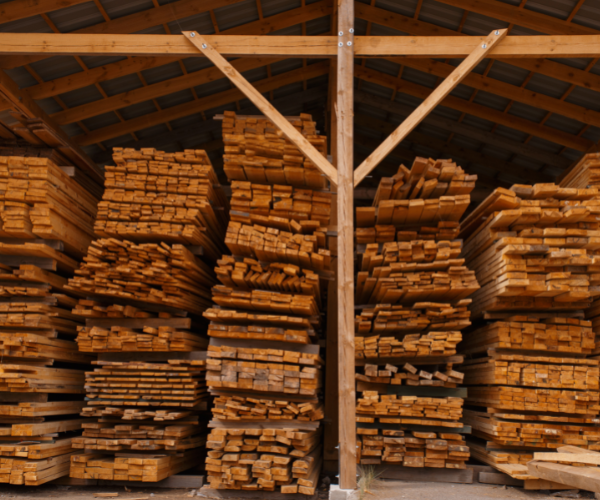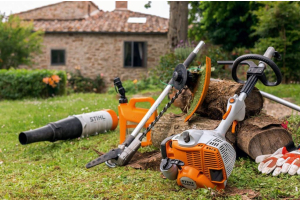What Is The Difference Between C16 And C24 Timber?

Purchasing timber can come with surprising confusion. There are so many options on the market and technical terms that can leave you wondering which option is the best for your project. Timber is an essential material for a variety of joinery requirements, so figuring out which types of timber you should be using is important.
C16 and C24 are the most popularly used treated timber grades used in the UK, but what exactly are they, and what are the differences? In this blog, we'll cover the benefits and the variations available, so you can make the right choice.
What Is C16 Timber And C24 Timber?

While types of timber are widely understood, the technical jargon surrounding it can be complicated at first glance. Timber comes in a variety of strength grades and materials, and C16 and C24 are two of the grades used most often.
The C stands for conifer, which is the type of tree the timber is sourced from, while the 16 and 24 refer to the strength grade of carcassing timber. There are 12 different strength grades for timber products in the UK, which are set by the British Standard in BS 5268.
How Are Different Types Of Timber Graded?
Each of these 12 grades, including C16 and C24, is set by the British Standard Institution - but how are these grades assigned? Different factors are taken into account in order to properly assess the soundness of softwood, which include:
- Knots
- Woodworm Holes
- Splits Along The Grain
- Slope Of The Grain
What Is C24 And C16 Timber Used For?
As one of the most used building materials, timber is used for a wide range of construction projects. Both C16 and C24 graded timbers are suitable for many structural applications, including:
- Rafters
- Floor Joists
- Timber Frames
- Formwork
- Shuttering
- Studwork For Partition Walls
Is C24 Timber And C16 Timber Ok For Outdoor Use?
In terms of external use, C16 and C24 timber can be used outdoors for everything from exterior construction to patio decking. However, it has to be treated beforehand, as treated timber is water and insect resistance. This helps your structures avoid any erosion or damage from the elements, and regular maintenance ensures exterior wood lasts in the long term.
C16 Timber
C16 is the most common form of timber used in the construction industry and can be used in many different applications. Kiln-dried to minimise the moisture of the wood, C16 timber offers a cost-effective option that doesn't cut back on quality.
C16 has several properties that make it fantastic for internal construction projects like rafters, floors, and roof joists. It's sturdy and dependable while offering other benefits such as bending, compression and density which lends C16 well to construction.
While this versatile and affordable timber grade has many positive properties, there are potential defects such as grain deviations that can affect the strength of the timber and cosmetic flaws such as sap stains.
C24 Timber
This timber is also kiln-dried to reduce the amount of moisture found in the wood and is another popular option for timber kits and internal partitions. One of the highest quality types of timber available on the market, and usually has fewer visible defects.
While at a higher price point, C24 timber does provide superior strength for demanding applications. This wood strength is often used for load-bearing jobs that require a strong material, like flooring and roof trusses. The appearance of C24 also makes it a common option for building projects that are aiming for a visible finished product, including decking and exposed rafters.
What Is The Difference Between C24 and C16 Timber?
While these grades are common in the construction industry, there are several notable differences between C16 and C24 timber. While both grades are durable enough to take on demanding building applications, C24 is the stronger option of the two. This superior strength means that C24 is usually the best option for large-scale projects where dependable robustness is essential.
The appearance of C16 and C24 also sets them apart from each other. C16 timber can have some defects, which affect the overall look. C24 has fewer visible flaws, giving the timber a cleaner and more uniform appearance. So, if aesthetics are important for your joinery application, C24 is the recommended choice.
Another difference between C16 and C24 timber is the price point, which is impacted by where the wood for each grade is sourced. C16 is grown and produced here in the UK at a faster rate, which is why it's the most cost-effective choice. On the other hand, C24 is imported from colder areas of Europe, including Germany and Scandanavia. The climate of these countries forces a slower growth rate and a tighter grain. This helps to improve the strength of the wood, which can be seen with closely packed rings.
Want to know the numbers behind the differences? Take a look at this handy chart to compare these timber types at a glance.
| Strength And Properties Classifications | C16 | C24 |
|
Tension parallel to grain (N/mm2) |
3.2 |
4.5 |
|
Bending parallel to grain (N/mm2) |
5.3 |
7.5 |
|
Compression parallel to grain (N/mm2) |
1.8 |
7.9 |
|
Compression perpendicular to the grain (N/mm2) |
2.2-1.7 |
2.4-1.9 |
|
Shear parallel to grain (N/mm2) |
0.67 |
0.71 |
|
Modulus of elasticity mean (N/mm2) |
8,800 |
10,800 |
|
Modulus of elasticity minimum (N/mm2) |
5,800 |
7,200 |
|
Characteristic density (kg/m5) |
310 |
350 |
|
Average density (kg/m5) |
370 |
420 |
Which Timber Grade Is Best For My Project?
This is a tricky question to answer, as it entirely depends on what you value. Both of these grades are used for similar internal and external applications and have their own unique benefits and drawbacks. If high strength or appearance is your top priority, then C24 is a fantastic choice.
Alternatively, if you're looking for a cost-effective option that provides good quality then C16 offers versatility while still being affordable. No matter the job at hand, our team is available to offer expert advice. As one of the leading suppliers of high-quality building materials, we are dedicated to helping you find the right option for your project.








